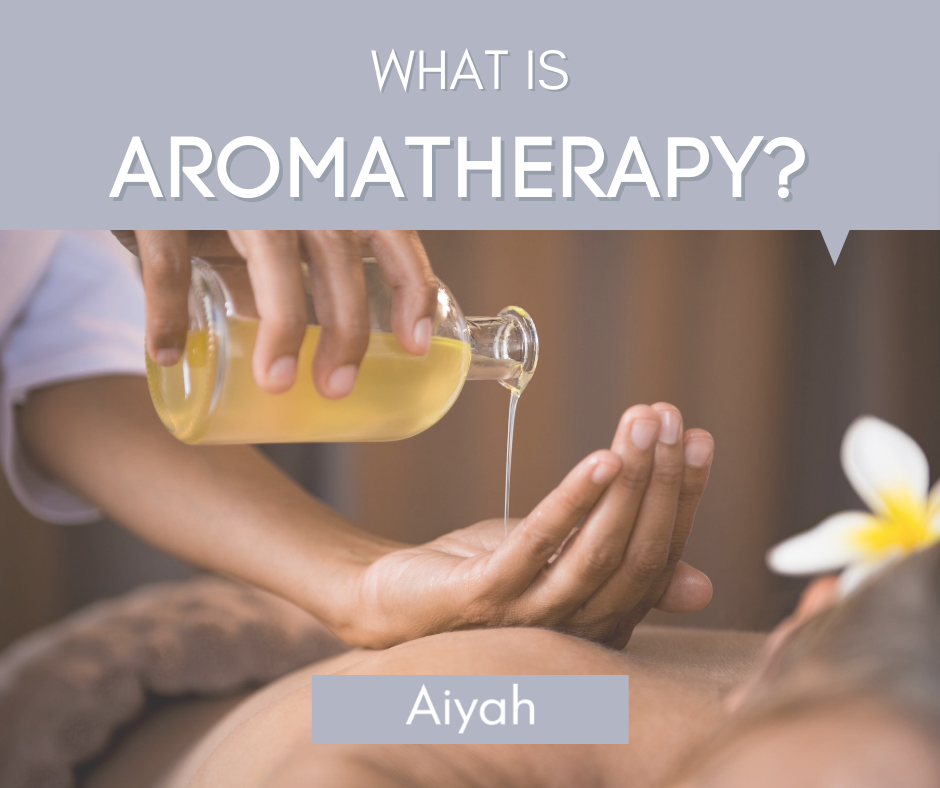As we know, Essential Oils are concentrated liquid that contains the aromatic compounds from plants. They can be absorbed by inhalation, contact with skin, as well as ingestion. These essential oils enter the body via the bloodstream and can have a positive and beneficial effect on our body, our systems and tissues.
Aromatherapy is the clinical therapeutic use of Essential Oils. Aromatherapy is both an art and a science.
The wonderful thing about Aromatherapy is that it incorporates the therapeutic uses of the essential oils into our treatment and also our everyday lives. As we know, essential oils can affect the mind, the body, and the emotions. Essential Oils are very powerful and each essential oil can have a variety of clinical applications, and Aromatherapy is the use of these essential oils. This includes blending, application methods, production, and usage.

Aromatherapy promotes health and well-being and is a holistic healing treatment. In aromatherapy, essential oils can affect:
In Aromatherapy, the Essential Oils are often administered in the following ways:
Through Inhalation: Via the airway. Essential Oils are dispersed into the atmosphere and inhaled via the olfactory system. The pure essential oil vapors enter the nose and therefore into the brain and bloodstream.

Topically: Via the skin. This is where Essential Oils are applied to the skin via a pathway or carrier product and with skin exposure. They permeate the skin’s membrane and enter the bloodstream.

Ingestion: Via the oral route. This application is administered by mouth. It’s not in classical aromatherapy but in the French physician style of Aromatherapy, it is known to be of use. However in Classical Aromatherapy, Essential Oils are never ingested.

The methods of application in a clinical sense and how to apply the Essential Oils in Aromatherapy are as follows:
Diffusion: Dispersing the Essential Oils into a room through heat or steam, so their aroma fills the room or space.
Steam Inhalation: 5-10 drops of Essential Oils in a bowl of steaming hot water for inhalation, and infusion of the scented steam.

Massage Application: Blending in a carrier oil to apply topically to the skin through gentle massage. This is a form of Clinical Aromatherapy.
Topical Application: Applying Essential Oils that are infused into a product, balm, or oil onto the skin in order to apply oils into the body, usually, with a carrier oil, cream or lotion.

Bath: 5-10 drops of Essential Oils in a small bowl of milk, scooped into a warm bath to bring the blend in and disperse evenly.
Compress: 3-6 drops of Essential Oils applied to a warm moist towel for application to skin or to ease pain from strained muscles or headaches, and menstrual cramps.

Spritzer: 8-10 drops of Essential Oils to distilled water to be used as a spray, spritz, room spray, toner, or refresher spray.
Bath Salts: Using Epsom salts or sea salt. 10-15 drops of Essential Oils to a warm bath or to be scrubbed onto the skin.

Laundry: Essential Oils can be used in the laundry, making clothes smell and feel clean and fresh. Add a few drops of oil into the washer or dryer.
Cleaning: Essential Oils can be added to be used as cleaners and surface wipes for household use, clean bathrooms, kitchen floors, and laundry.
Product Infusion: Essential Oils can be added to soaps, balms, tinctures, creams, oils and other products for use in Aromatherapy.

Aromatherapy involves blending a number of essential oils together to become a synergistic whole or better than one essential oil alone, as all the chemical constituents band together to create a better therapeutic approach that is targeted holistically.
Aromatherapy becomes an art form when an aromatherapist mixes these essential oils to be both therapeutic and sweet smelling.
Aromatherapy is also science because it also involves knowing the nature of plant botanicals and their clinical applications and therapeutic properties and using that knowledge to clinical advantage in your approach to your client.

